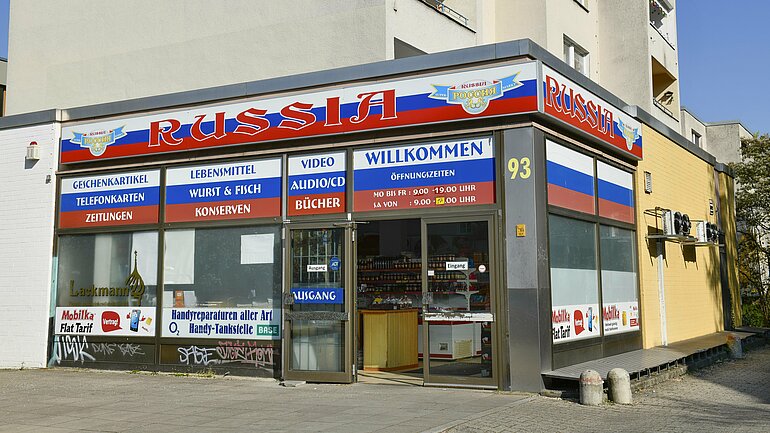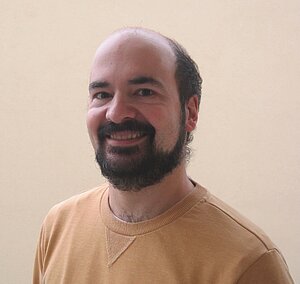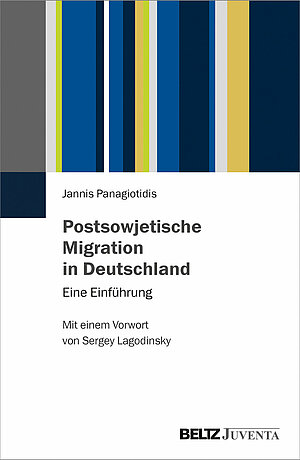“Our migration discourse is often focused on problems”

“Late resettlers” and quota refugees started to arrive in Germany from the late 1980s onwards. With his book on Post-Soviet Migration in Germany, Jannis Panagiotidis has published the first comprehensive study of the defining features of this migration and the lifeworlds which subsequently emerged.

Why is the topic of post-Soviet migration in Germany important?
The post-Soviet migrants are the largest migrant group – in other words, the largest group with a recent migration history – in German society. There are more post-Soviet than Turkish-origin migrants in this country, but the public discourse sometimes conveys a different impression. Migration from the former Soviet Union receives less attention. It is overshadowed by other groups that are perceived as more problematical and hence as more important, such as Muslim migrants and, especially since 2015, refugees. This has to do with the fact that our migration discourse is very often focused on problems, or perceived problems. In fact, post-Soviet migrants and especially the Russian-German “late resettlers” (Spätaussiedler*innen) have received their share of negative publicity as well, particularly in the 1990s; since then, they have more or less disappeared from the public discourse. And it is for precisely that reason that I believe it is important to pick up the thread again, and 20, 25 or 30 years on – for that’s how long these people have been in this country – to look beyond the problems of the past and take stock of the situation today.
What prompted your decision to focus on the two groups – Russian-German resettlers and Jewish quota refugees – in a single study?
Despite all the significant differences between the two groups, the first point is that these people are subject to a shared negotiating framework in German society, so it is worth looking at how they deal with that – and how they themselves are dealt with. And secondly, both the resettlers and the quota refugees came to Germany under special migration programmes, which differentiates them very strongly from other migrants. The resettlers were granted German citizenship on the basis of their German ethnicity, while the quota refugees were given permanent residence status because they were Jewish: in other words, they got a better deal than other migrants. So both these admissions regimes were based on ethnicity and history. This was a form of reparation through migration: in the case of the ethnic Germans, it was reparation for the persecution and expulsion that they suffered at the hands of the Soviets after the German attack on the Soviet Union, and in the case of the Jewish quota refugees, it was reparation for the Shoah.
Despite having a common language, the post-Soviet migrants dislike being referred to as “Russian-speaking migrants”. Why is this a problematical term?
It is something of a paradox that people whose language, in objective terms, is Russian often dislike being described as “Russian-speaking”. One reason is that under the German admissions regime for resettlers, a distinction was invariably made between the German and Russian cultural spheres, based on language. For example, the Federal Administrative Court handed down a decision in which the judges stated that “anyone who speaks Russian belongs to the Russian cultural sphere and, accordingly, cannot be German”. That is very wide of the mark when we consider the realities of the Soviet Union as a realm of multiple nationalities, but it was a decisive factor in legitimising admission to Germany and also touched on the fundamental concept of a German “self”. But beyond that, this notion of “Russian speakers” – Russkogovoryashchiye in Russian – has recently been instrumentalised by Russia and a kind of diaspora has been constructed, which the Russian state is attempting to influence. Many migrants are keen to distance themselves from that. And a third point: it is noticeable that within the post-Soviet migration community, particularly among resettlers, the Russian language was not passed on to the younger generation to any substantial extent. This was partly due to a lack of opportunity, but it also reflects a conscious decision in favour of linguistic assimilation in Germany, with knowledge of another language seen as a hindrance.

What did you find out about this “privileged group” of migrants, as you yourself term them, through your use of statistical data?
The use of statistical methods provides insights into how the privileged status of these migrants – as compared with other migrant groups – impacts on the success of structural integration. It is then possible to compare various migrant cohorts and form hypotheses. For example, if we see that the Russian-German resettlers currently have one of the lowest unemployment rates, it is reasonable to infer that this has to do with their facilitated access to the labour market resulting from their secure status as German citizens and that the integration programmes provided for them have had a positive impact. However, we should not idealise the situation: it is clear from the statistics that the quality of employment is not particularly high; many of these people are working in low-paid jobs.
The statistics also reveal the problematical issue of the qualifications that the migrants brought with them, which were not transferable to a German labour market context. This is particularly striking with the Jewish quota refugees, a very well-educated migrant cohort with a high proportion of intellectuals but comparatively poor performance in the labour market. This is an ongoing issue, not least from a life perspective. Because these migrants’ qualifications were not recognised and their achievements were downgraded, they continued to depend on welfare benefits. As a result, with the passage of time, they have fallen into income poverty in old age.
How do these experiences influence people’s political views?
Political views have received a great deal of attention in recent years because there is a widespread perception that the post-Soviet community is increasingly drifting to the right. There is indeed a disproportionate number of AfD voters within the post-Soviet voter group in Germany; this is not just a cliché. However, we are not seeing a general shift to the right within the whole group: it is the conservative element of the post-Soviet voter group that has moved further to the right in recent years. Indeed, quite a stable proportion, over 40 per cent, of post-Soviet migrants have voted for parties to the left of centre, but that tends not to be discussed. There may be various factors underlying this shift to the right, and they need to be studied in more detail. The experience or fear of loss of status undoubtedly plays a role, as does a strong identity politics component. Many identify as white Christians and reject the “migrant” label; as a result, they distance themselves particularly sharply from new arrivals from Muslim communities, and this can encourage a shift to the right.
In parallel, as a result of the “Lisa case” in Germany, there was a concern that these people were disloyal and susceptible to Russian government propaganda. In terms of the relationship to Russia, the most interesting insight, from my perspective, was that a pro-Kremlin attitude can be found not within the older generation, as is often assumed, but within the middle generation; in other words, among those who came to Germany as children or teenagers, but also among grandparents who then joined their families here. Whether a person made their own individual choice to migrate to Germany or whether they were brought here by their families appears to be the determining factor.
The interview was conducted by Elena Goerttler-Reck, trainee in communications at ZOiS.
apl. Prof. Dr. Jannis Panagiotidis is Deputy Head of the Research Center for the History of Transformations at the University of Vienna.
Jannis Panagiotidis, "Postsowjetische Migration in Deutschland. Eine Einführung" (2020), Beltz Juventa.